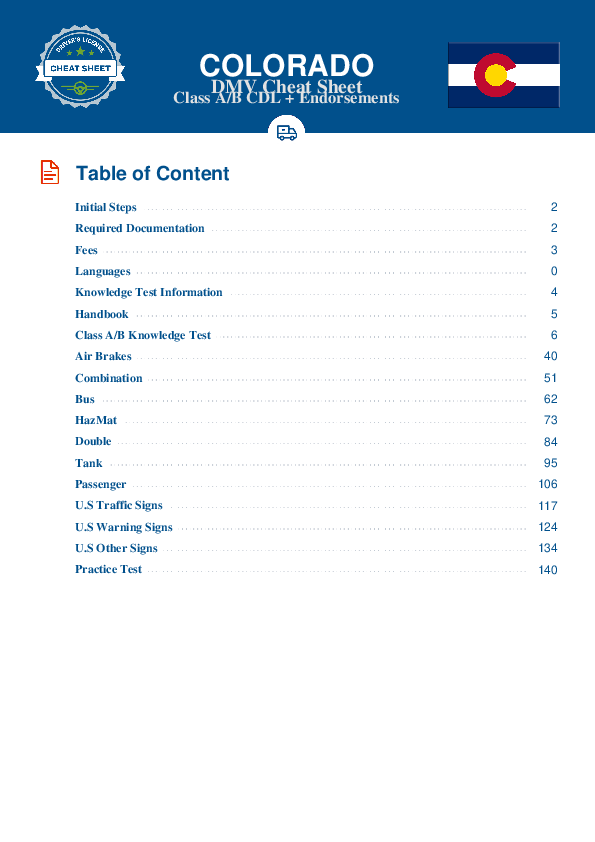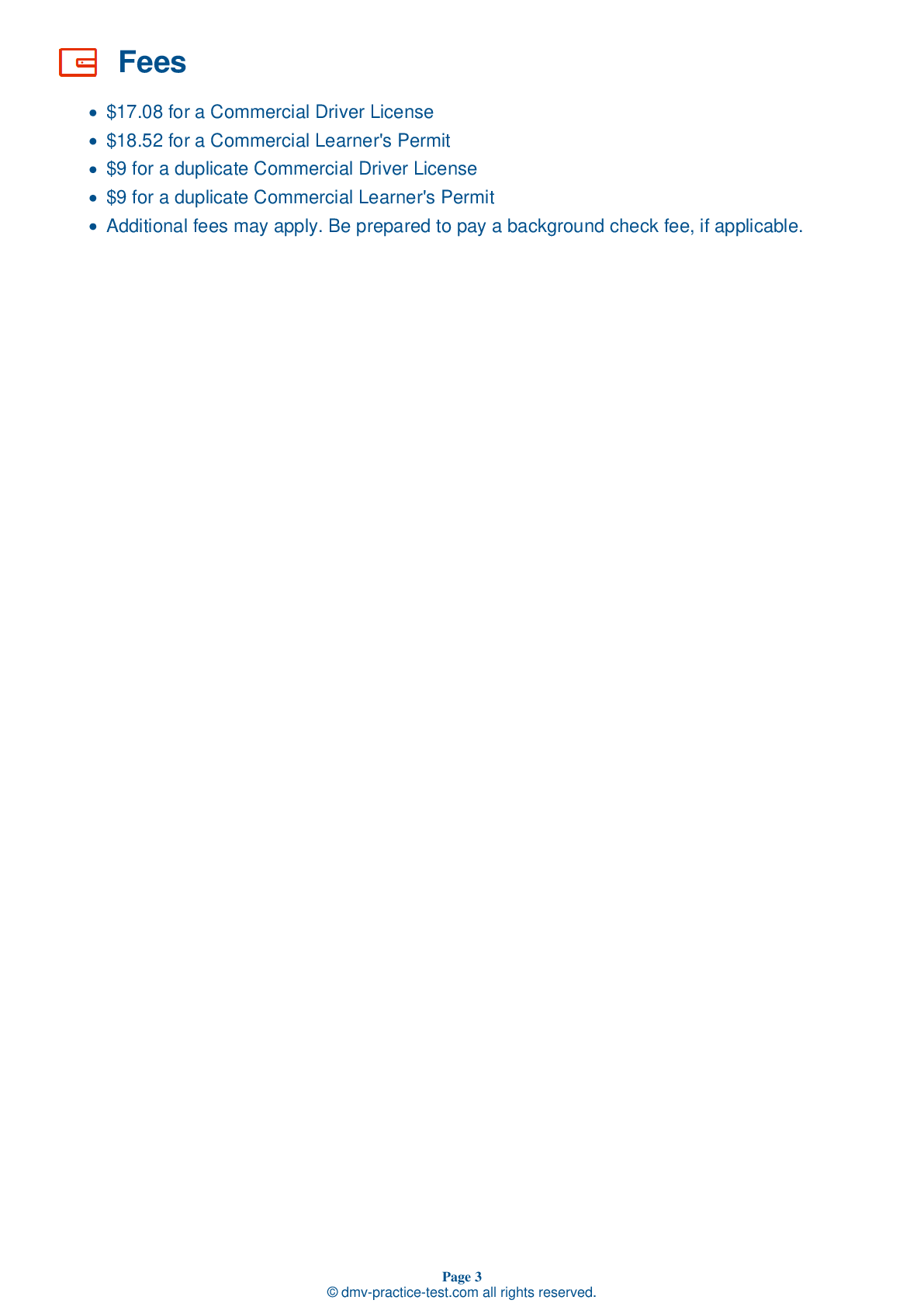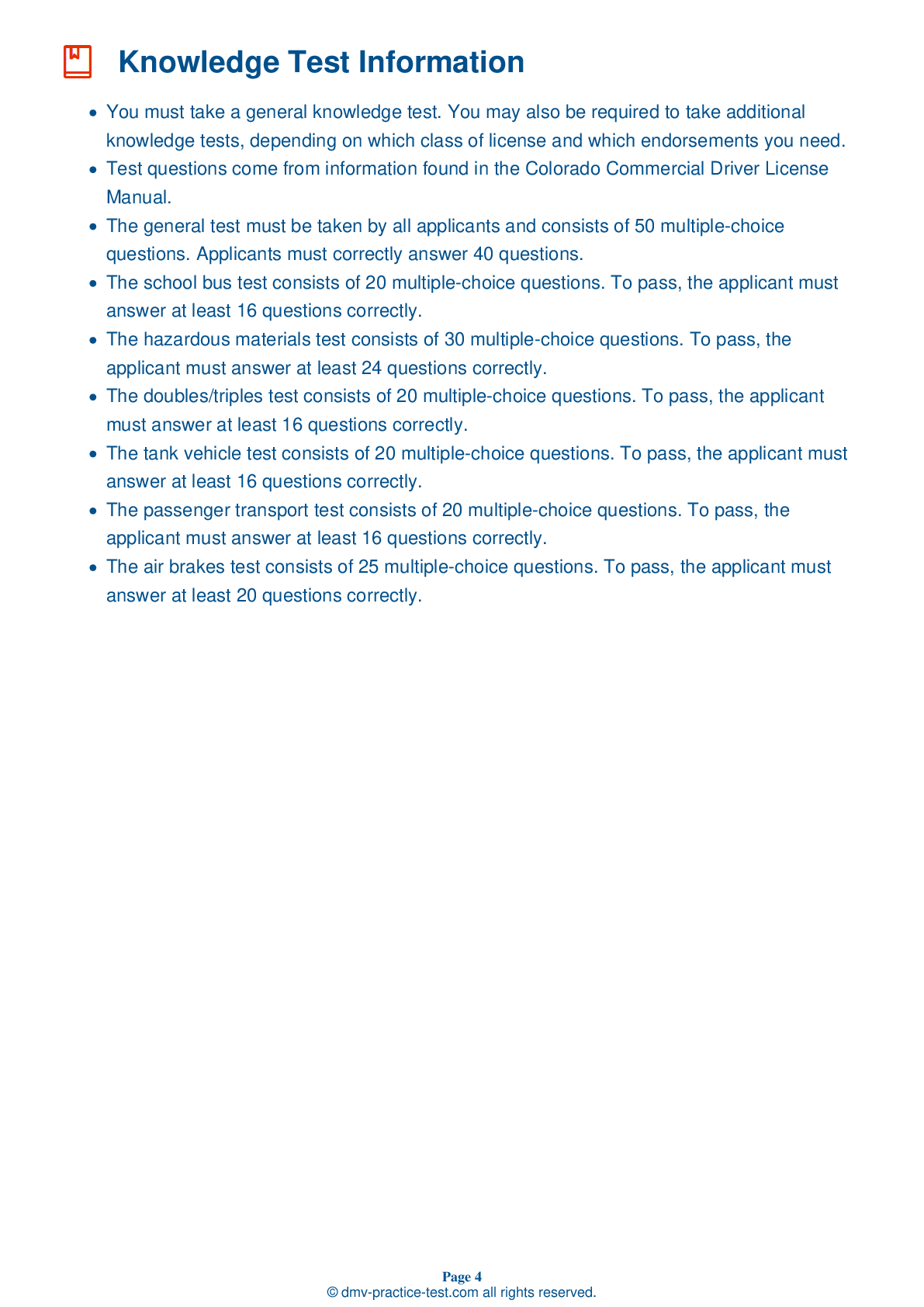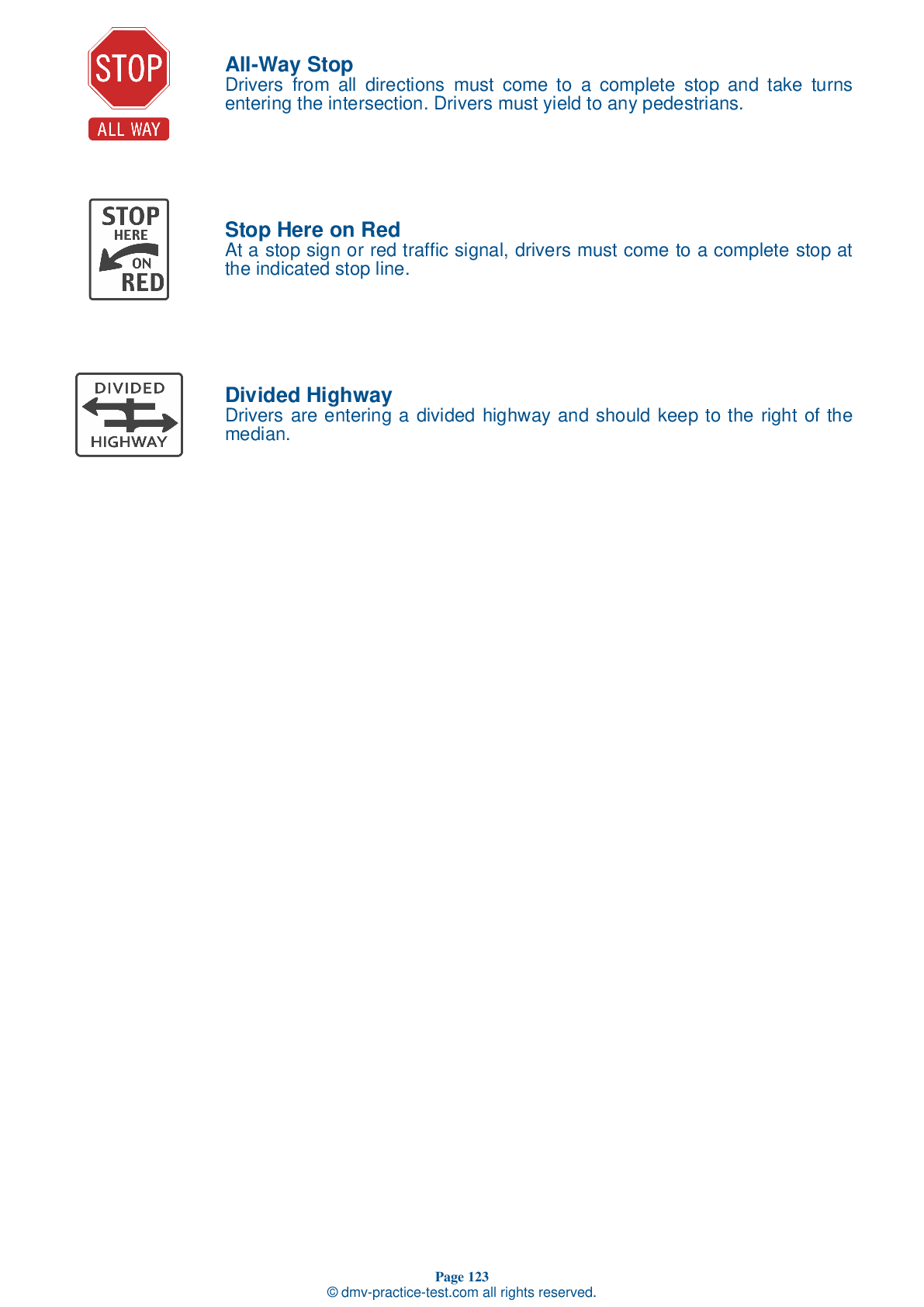Air Brakes Endorsement Test | Colorado 2025 #2 Page 2 of 4
Train for FREE online with our Colorado CDL air brake test. The official exam test consists of several obligatory parts, with all of them checking your knowledge of different blocks of road rules. If you need to obtain a CO Class A/Class B driver license in 2025, practice as much as possible. Free sample tests published on our website will help you check and improve your knowledge and boost your grades. Please bear in mind that the requirements for CDL may vary from state to state.
7 . Before a vehicle with dual air brakes is driven, pressure of at least ____ should be built up in both braking systems.
Before driving a vehicle with a dual air brake system, allow time for the air compressor to build up pressure of at least 100 psi in both the primary and secondary systems.
8 . Spring brakes come on:
Spring brakes come on automatically when air pressure drops to an unsafe psi level. Instead of waiting for the spring brakes to automatically activate, you should safely exit the road as soon as you notice the low pressure warning signal and bring your vehicle to a stop while you are still able to control the brakes.
9 . What can happen if the air pressure gets too low in an air brake system?
Pressing and releasing the brake pedal unnecessarily can let air out faster than the compressor can replace it, reducing the available air pressure. If the air pressure in an air brake system gets too low, the brakes will no longer work.
10 . During an applied leakage test, the maximum leakage rate for a triple combination vehicle is:
It is important to know the maximum air loss rate that is safe for your specific vehicle. A triple combination should have a leakage rate no higher than 6 psi in a minute during an applied leakage test.
11 . Most heavy-duty vehicles use:
Most heavy-duty vehicles use dual air brake systems, in which there are two separate braking systems operated by a single set of controls. Each system operates the brakes on different axles.
12 . When inspecting your brakes, a slack adjuster should move ____ from where it is attached to the push rod.
Check each slack adjuster after setting wheel chocks and disengaging the parking brake. Pull the slack adjusters to make sure they do not move more than about one inch from where the push rod is attached. If they move more than one inch, they may be out of adjustment and will need to be fixed.
See the exact questions that will be on the 2025 Colorado DMV exam.
99.2% of people who use the cheat sheet pass the FIRST TIME
Lillian MCcranie explains how our CDL study guide was helpful in passing the exam and recommends it to everyone.
Cameron tells us how he purchased the CDL exam, and found it to be a useful tool which helped him pass the exam and find a job.



